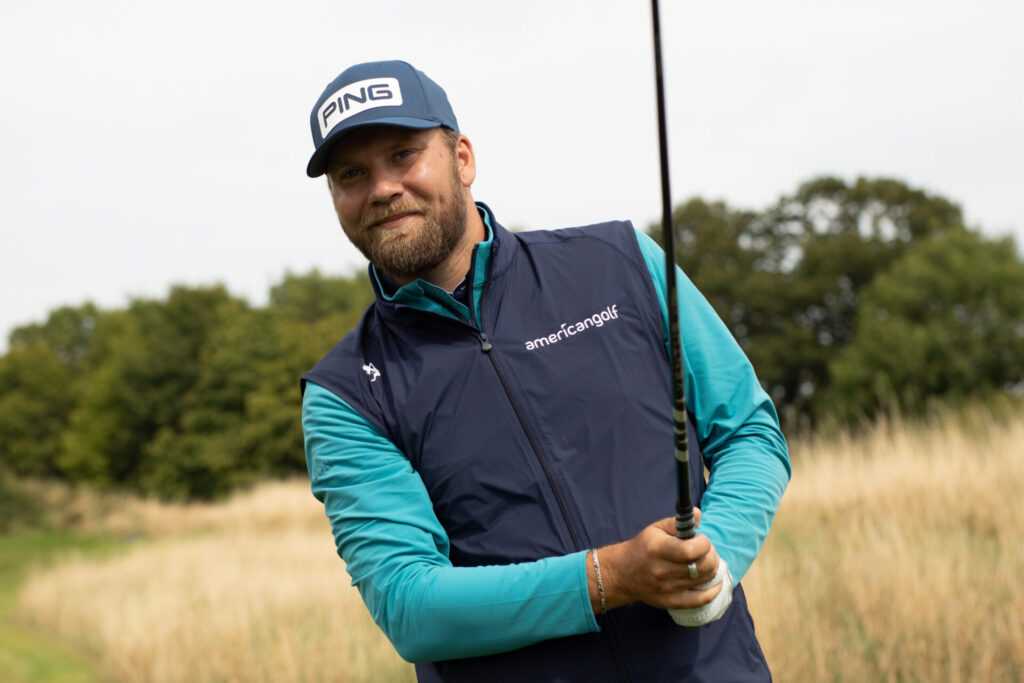Golf pro answers the top questions you’re too embarrassed to ask

Golf can be an intimidating sport, whether you’re a complete novice taking your first swing as part of a New Year’s resolution or an old pro who’s been around the course countless times. The truth is, we all have questions we wish we’d asked sooner.
To help demystify the game, American Golf ambassador and touring pro, Dan Brown has uncovered the most common questions that aspiring golfers are asking – along with those that even experienced amateur golfers have been too embarrassed to voice.
He explains: “Starting something new can be a bit daunting, especially with a sport like golf, which feels technical and full of unwritten rules. Even if you enjoy a casual round with friends but want to improve, it can be awkward to ask those basic questions – whether it’s to a coach or a mate.
“The beauty of golf is that it’s a sport where you’re always learning. By nailing the basics early on, you’ll see a big improvement in your game and start beating your mates in no time!”
The top golf questions we’re asking, according to Google
How do I start actually playing golf?
“Group lessons are a great way to start learning golf without feeling overwhelmed. They’re relaxed and social, and provide the perfect opportunity to pick up the basics alongside others.
“It might sound silly, but another piece of advice is to head to a driving range with someone you know, borrow some clubs, and focus on enjoying yourself while trying to hit a few balls. You don’t need fancy equipment to begin—just get a feel for the sport
Do I need a special golf club if I’m left-handed?
“Absolutely, left-handed golfers will need clubs designed just for them. These are basically the reverse of right-handed clubs, so you can set up and swing naturally.
“If you’re not sure whether you’re more comfortable playing left- or right-handed, it’s worth trying both. Many driving ranges or golf stores will let you test out different clubs to see what feels right for you.
“Once you know, finding left-handed clubs is pretty straightforward. While the selection might not be as wide as for right-handed players, there are plenty of great options out there to get you started. A basic, budget-friendly left-handed set is all you need to begin learning and enjoying the game.”
How do I hold a golf club?
“Getting your grip right is essential – it’s the foundation of your swing. For right-handed golfers, start by placing your left hand on the club, ensuring the handle rests in the fingers, not the palm. Then wrap your fingers around the club and position your thumb to create a “V” pointing toward your right shoulder. Your right hand should then cover your left, with your thumb running along the left hand’s grip.
“I always tell beginners to hold the club like they’re shaking hands with it: firm, but not too tight. A relaxed grip will give you more control and flexibility in your wrists.”
“For left-hand golfers, just reverse this process – there are golf clubs made specifically for left-handed players.”
How long does it take to play 9 rounds of golf?
“If you’re fairly new to golf, it typically takes around two hours to play 9 holes. However, don’t feel pressured to rush it – golf is as much about enjoying the experience as it is about improving.
“Take time to practice your swing, improve your short game and focus on strategy rather than speed. With experience, you’ll then find yourself playing a bit faster.”
How do I take a divot in golf?
“A divot is the small chunk of turf that gets displaced when your club strikes the ground during a shot. It’s common, particularly with irons and wedges and can help indicate whether you’re making solid contact with the ball.
“Taking a divot isn’t about smashing the ground. The goal is to strike the ball cleanly first, just before reaching the lowest point of your swing. Think of it like you’re brushing the grass lightly, making sure you hit the ball and not just the turf. That way, you’ll have more control and a smoother shot.”
How do I break 100 in golf?
“Breaking 100 is a significant milestone for many golfers and it all starts with keeping the ball in play. Focus on consistency rather than trying to hit the ball harder. A steady, controlled approach will help you avoid big mistakes and penalties.
“The key to breaking 100 is working on your short game – this is where most strokes are gained or lost. Spend time practising your chipping, putting and wedge shots, this way you’ll see big improvements in your overall score.”





